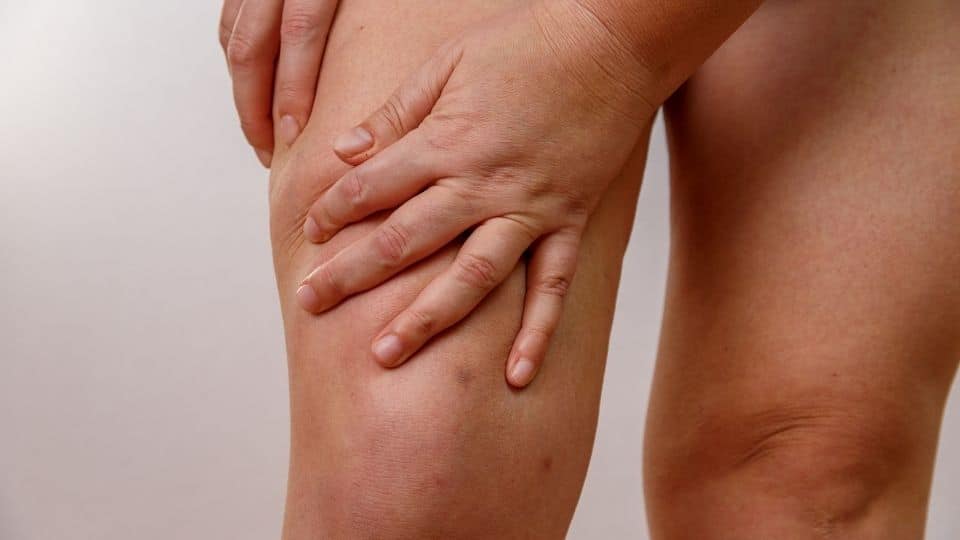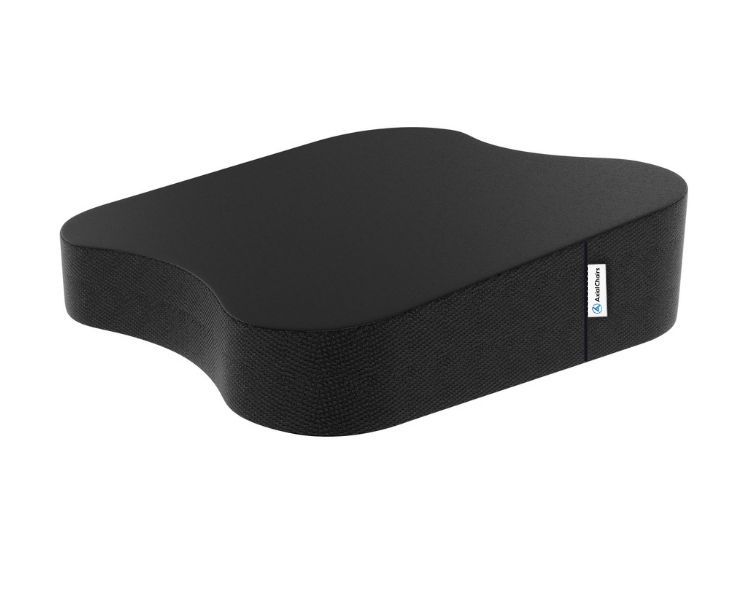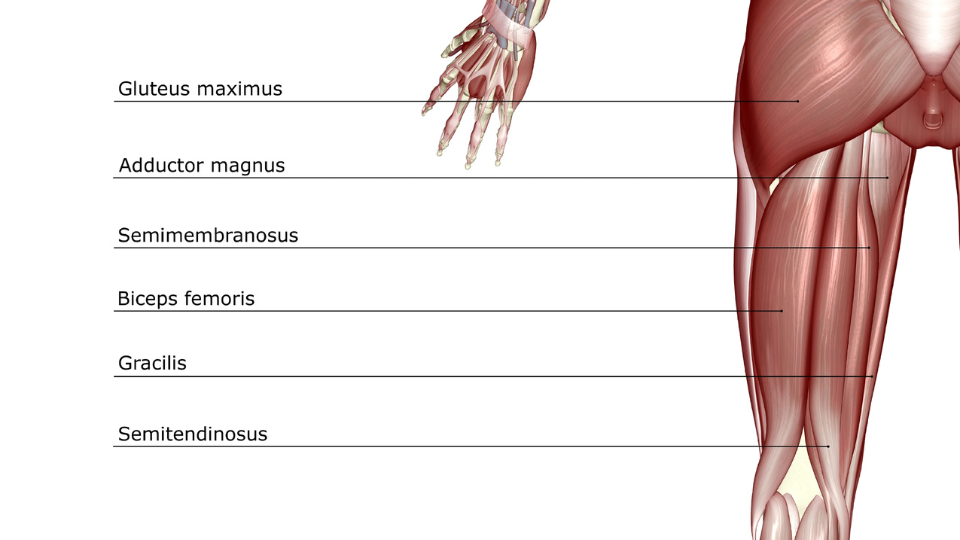Are you experiencing pain in the back of your thigh? If so, it’s important to understand why. There are many causes for this type of discomfort, ranging from tight muscles and lack of flexibility to underlying medical conditions. In this blog post, we’ll discuss the potential reasons behind back-of-thigh pain, as well as provide tips on how you can reduce or prevent it from happening in the future! Read on to learn more about why sitting may be causing your soreness — and what steps you can take to feel better today.
As a general rule, sitting for long periods of time can cause discomfort and pain in the back of the thigh, also known as hamstring pain. Prolonged pressure on the sciatic nerve and tightness in the muscles of the back of the thigh can contribute to this pain.
Let me guide you through the best way to sit with pain in the back of your thigh. For over 30 years, I’ve been practicing chiropractic, and during that time, I’ve also trained as an ergonomist. I have a published book on posture, spoke on this subject on national tv, and have engineered several solutions to help people achieve better posture and comfort while sitting. In addition, I ran a successful Kickstarter campaign to fund the development of a set of ergonomic seat cushions. With all this experience and expertise, I’m confident I can offer some excellent advice that can help reduce or even eliminate discomfort.
Anatomy of the Back of Thigh
Hamstrings
The back of your thigh is primarily made up of three hamstring muscles: the semitendinosus, semimembranosus, and biceps femoris. These muscles play a significant role in the movement and stability of your hips and knees. When these muscles are tight or under stress, you may feel discomfort in the back of your thigh.
All Day Comfort & Support
Sciatic Nerve
The sciatic nerve is the largest nerve in your body, originating from the lower back and running down your leg. When this nerve becomes irritated or compressed, it can cause pain, numbness, or tingling in the back of your thigh, a condition known as sciatica.
Causes of Thigh Pain While Sitting

Poor Posture
Poor sitting posture can cause strain and tension in the muscles and nerves of your thigh. Slouching, crossing your legs, or sitting on your foot can compress the sciatic nerve or place undue pressure on your hamstrings, leading to pain in the back of your thigh.
Prolonged Sitting
Sitting for extended periods can restrict blood flow to your muscles, causing stiffness and discomfort. Moreover, prolonged sitting can lead to muscle imbalances and tightness, particularly in the hamstrings, resulting in pain in the back of your thigh.
Sciatica
Sciatica is a condition caused by irritation or compression of the sciatic nerve. It can result in pain, numbness, or tingling in the back of your thigh. Sitting for long periods can exacerbate sciatica symptoms by increasing pressure on the nerve.
Hamstring Tightness
Tight hamstrings are a common cause of pain in the back of the thigh. Sitting for extended periods can contribute to hamstring tightness, as the muscles remain in a shortened position. This tightness can cause discomfort and restrict your range of motion.
Prevention and Management

Stretching Exercises
Regular stretching exercises can help alleviate pain and tightness in the back of your thigh. Hamstring stretches, calf stretches, and hip flexor stretches can improve flexibility and reduce tension in the muscles and nerves.
Ergonomics
Invest in an ergonomic chair that provides proper support for your lower back, hips, and thighs. Adjust
the height of your chair so that your feet are flat on the ground, and your knees and hips are at a greater than 90-degree angle. This position can help reduce pressure on your hamstrings and sciatic nerve, preventing pain in the back of your thigh.
Seat Cushion for Thigh ComfortAxial Ergonomic Seat Cushion® | Seat Chair Wedge
Quick Guide: A 30-Second Summary

All Day Comfort & Support
Product Name
Axial Designs™ Seat Cushion
Price
$149
Warranty
1 Year
Type
Posture Wedge
Top Layer
100% Natural Latex (Molded)
Bottom Layer
High-Density Foam
Top Material
Isometric Grippy Vegan Leather
Bottom Material
Non-Slip Material
Side Material
3D Breathable Fabric
Taking Breaks
Taking regular breaks from sitting can help prevent and manage thigh pain. Stand up, walk around, and stretch your legs every 30 to 60 minutes. This practice will improve circulation, reduce muscle stiffness, and decrease the risk of developing muscle imbalances.
Pain in Back of Thigh When Sitting on Toilet
From a chiropractor’s perspective, pain in the back of the thigh when sitting on the toilet may be caused by sciatic nerve irritation, muscle strain, or poor posture. Ensure that you’re sitting with your feet flat on the ground and your knees at a 90-degree angle. You can also try using a small footstool to elevate your feet and reduce pressure on the sciatic nerve.
Throbbing Thigh Pain When Sitting
Throbbing thigh pain when sitting may be due to muscle tension, poor circulation, or nerve compression. Regular chiropractic adjustments can help realign the spine, alleviate pressure on nerves, and improve circulation. You can also stretch your legs and practice good posture when sitting for extended periods.
Upper Left Thigh Pain When Sitting
Upper left thigh pain when sitting may be due to poor posture, muscle imbalances, or an underlying issue such as a herniated disc or hip joint dysfunction. A chiropractor can assess your spine, pelvis, and hips to identify any misalignments or imbalances and provide appropriate treatment to alleviate the pain.
Back of Thigh Pain
Back of thigh pain may be caused by hamstring strain, sciatic nerve compression, or referred pain from the lower back or hip. Chiropractic care can help address the root cause of the pain by correcting misalignments in the spine, improving joint mobility, and providing recommendations for appropriate stretches and exercises.
How to Relieve Leg Pain From Sitting Too Long
To relieve leg pain from sitting too long, consider the following tips:
- Maintain proper posture: Keep your back straight, shoulders relaxed, and feet flat on the ground.
- Adjust your chair: Make sure your chair supports the natural curve of your spine and that your knees are at a 90-degree angle.
- Take breaks: Stand up, stretch, and walk around at least once every hour.
- Perform leg stretches: Stretch your hamstrings, quadriceps, and calf muscles regularly throughout the day.
- Consider chiropractic care: Regular adjustments can help maintain spinal alignment and reduce pressure on nerves that may be causing leg pain.
Always consult with a healthcare professional, such as a chiropractor, to address any ongoing pain or discomfort.
All Day Comfort & Support
When to Seek Medical Help
If your thigh pain persists despite making lifestyle adjustments or if the pain is severe and accompanied by other symptoms like numbness, tingling, or weakness, it’s essential to seek medical help. A healthcare professional can diagnose the underlying cause of your discomfort and recommend appropriate treatment options.
Summary
In conclusion, sitting in a chair with poor posture can have a significant effect on the muscles of the back of the thigh. Sitting with extended time periods in an unhealthy position will tighten up the hamstrings and cause muscular pain or discomfort. Poor posture puts increased strain on the lower back and contributes to sciatic nerve irritation, which may cause numbness, tingling, and pain in the back of the leg. Furthermore, it is important to know when to get up from your seat and take frequent breaks. When possible switch between a seated posture and a standing one. Addressing any imbalances through stretching, foam rolling, massage or utilizing other corrective exercises can help restore correct positioning and alignment thus allowing for proper functioning of the hips and gluteal muscles leading to reduced tightness of hamstring muscles on the posterior thigh while sitting. Taking preventative measures such as maintaining proper posture along with regular exercise can significantly reduce your risk of developing chronic buttocks-thigh-leg related injuries due to prolonged sitting in bad positions.



